Related Research Articles

The Douglas Y1B-7 was a 1930s American bomber aircraft. It was the first US monoplane given the B- 'bomber' designation. The monoplane was more practical and less expensive than the biplane, and the United States Army Air Corps chose to experiment with monoplanes for this reason. At the time the XB-7 was ordered, it was being tested by Douglas Aircraft as an observational plane.
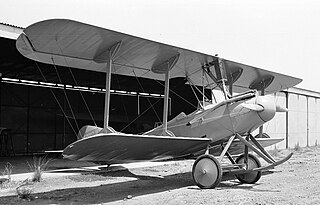
The Aircraft Engineering Corp Ace K-1 was a United States single-seat biplane aircraft designed in 1919 by Alexander Klemin, then Professor of Aeronautical Engineering at New York University (NYU). Later versions included a nearly faired-in engine installation. Re-introduced in 1930 with a re-designed fuselage and strengthened structure as the Ace 300 and Ace 200, fitted with Salmson 9Ad and LeBlond 5D engines respectively.

The Adcox Student Prince was a two-seat open-cockpit biplane designed by Basil Smith and built by the students of the US Adcox Aviation Trade School in 1929. It was based on the one-off Adcox Special, and the first example flew on 17 September.

The Keystone-Loening K-84 Commuter was a single-engine closed cabin 4 place biplane amphibious flying boat built by Keystone-Loening. It was powered by a 300 hp Wright Whirlwind engine mounted between the wings with the propeller just ahead of the windscreen. It was first produced in 1929.

The Burgess Company was a U.S. airplane manufacturer between 1910 and 1918.
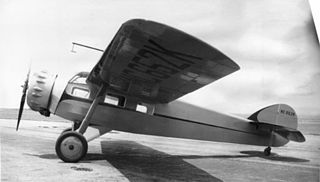
The Cessna Model DC-6 was a 1920s American high-wing four-seat tourer built by the Cessna Aircraft Company. It was used by the United States Army Air Corps as the UC-77/UC-77A.

The Curtiss Eagle was an airliner produced in small numbers in the United States shortly after World War I. The aircraft was a conventional biplane with three-bay, unstaggered wings of equal span. The fuselage was a very advanced design for its day, incorporating careful streamlining of its monocoque structure, and offering the crew as well as the passengers a fully enclosed cabin. The Eagle is sometimes named as the first American tri-motor aircraft; however Curtiss' own Model H flying boat flew with three engines for a time in 1914 before being converted back to twin-engine configuration.
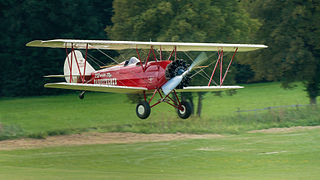
The Travel Air 2000/3000/4000 (originally, the Model A, Model B and Model BH were open-cockpit biplane aircraft produced in the United States in the late 1920s by the Travel Air Manufacturing Company. During the period from 1924–1929, Travel Air produced more aircraft than any other American manufacturer, including over 1,000 biplanes. While an exact number is almost impossible to ascertain due to the number of conversions and rebuilds, some estimates for Travel Air as a whole range from 1,200 to nearly 2,000 aircraft.

The Dayton-Wright OW.1 Aerial Coupe was an American four-seat touring aircraft built by the Dayton-Wright Company of Dayton, Ohio. Because it was the last aircraft designed by Orville Wright, the design was given the designation OW.1. The aircraft was based on a heavily modified De Havilland DH.4. Although only one was produced, the Dayton-Wright OW.1 marks the first working example of a civilian single-engine four passenger light cabin aircraft.

The Dayton-Wright RB-1 , also known simply as the Dayton-Wright Racer was a racing aircraft developed in the United States to participate in the 1920 Gordon Bennett Cup air race. Advanced for its day, the aircraft was a high-wing monoplane with a monocoque fuselage and cantilever wing that incorporated a mechanism designed by Charles Hampson Grant to vary its camber in flight by moving the leading edge and trailing edge. The aircraft also featured a retractable undercarriage operated by a hand-crank making it one of the first instances of undercarriage retraction for aerodynamic benefit alone. The propeller shaft was mounted through a large oval radiator. The pilot had no forward view, but was provided with flexible celluloid side windows. Cockpit access was through a hatch in the top of the fuselage. A prototype was built using non-retractable gear and strut-braced wings. A shorter tapered "racing wing" was installed afterward with leading and trailing edge flaps interconnected with landing gear deployment. The mechanisms and hinges for the wing flaps were exposed across the top of the solid wing. The racing wing produced directional instability requiring small tail fins to be added.

The International F-17 Sportsman was a 1920s American three-seat open-cockpit biplane designed and manufactured by the International Aircraft Corporation in Long Beach California and Cincinnati, Ohio. 107 aircraft were built, 77 of them at Cincinnati.

The Bullet Monoplane or Alexander Eaglerock Bullet was a low wing cabin monoplane that was a departure from traditional biplane aircraft of the era.

The Vought O5U was a 1930s prototype American observation floatplane to meet a United States Navy requirement for a catapult launched scouting aircraft. The contract was won by Curtiss who went on to produce the SOC Seagull; only one O5U was built.

The Wright-Bellanca WB-1 was designed by Giuseppe Mario Bellanca for the Wright Aeronautical corporation for use in record-breaking flights.

The Thomas-Morse MB-4 was a prototype American mailplane of the 1920s. It was of unusual design, being a biplane with twin fuselages housing the crew of two and a central nacelle which carried the aircraft's twin engines in a push-pull configuration.
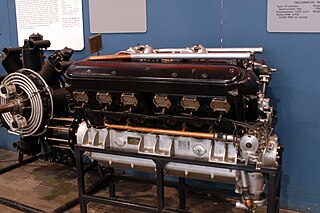
The Wright T-3 Tornado, also given the USAF designation Wright V-1950 was an American liquid-cooled aircraft piston engine, designed in the early 1920s.

The Bellanca SE was an American carrier-based scout monoplane designed and built for the United States Navy by the Bellanca Aircraft Company.
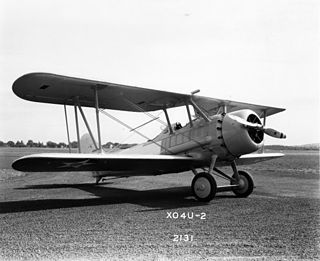
The Vought O4U Corsair was the designation applied to two different experimental biplane scout-observation aircraft. Neither reached production or entered regular service.

The Sikorsky S-33 Messenger was an American two-seat sesqiuplane designed and built by the Sikorsky Manufacturing Corporation in 1925.
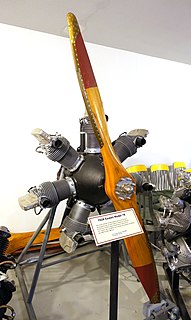
The Comet 7-cylinder radials were a family of air-cooled radial engines, designed and built by the Comet Engine Corporation at Madison, Wisconsin from around 1927.
References
- 1 2 Wegg, John (1990). General Dynamics Aircraft and Their Predecessors. London: Putnam. p. 41. ISBN 9780851778334.
- ↑ Andrade, John (1979). U.S. Military Aircraft Designations and Serials Since 1909. Earl Shilton: Midland Counties Publications. p. 137. ISBN 9780904597219.
- 1 2 Eckland, K.O. "Dayton-Wright". aerofiles.com. Retrieved 20 March 2018.
- ↑ Eckland, K.O. "Dayton-Wright XO-3: photograph". Aerofiles. Retrieved 20 March 2018.
- ↑ "Wright Field regs #4". aerofiles.com. Retrieved 20 March 2018.